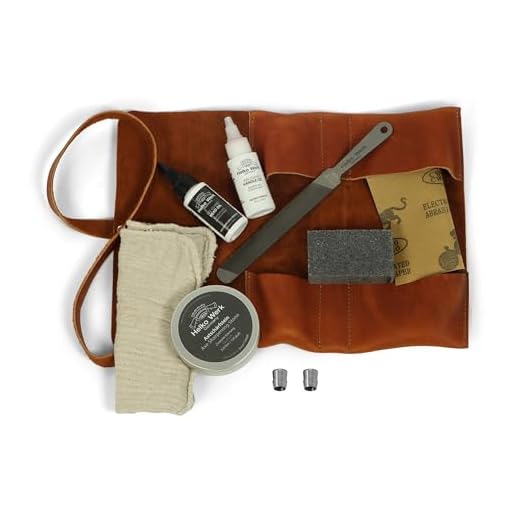




The Stone Age, also known as the Paleolithic period, spanned from about 2.6 million years ago to around 10,000 BCE. During this time, early humans relied on stone tools for various tasks, including hunting, crafting, and building. One of the most important stone tools used during the Stone Age was the axe.
The stone age axe was a crucial tool for early humans as it allowed them to cut trees, shape wood, and build shelters. But how were these axes made? Making a stone age axe was a complex process that required skill and knowledge of materials.
First, early humans had to select the right type of stone for making axes. The most commonly used stone for axe-making was flint due to its hardness and ability to hold a sharp edge. Flint was abundant in many regions during the Stone Age, making it an ideal choice.
Once they had the right stone, early humans would shape it into an axe head. This involved using another stone, such as a hammerstone, to chip away at the edges of the selected stone, slowly forming it into the desired shape. Stone age axe makers had to be precise in their strikes to ensure the axe head would be functional and durable.
The Process of Manufacturing Stone Age Axes
The manufacturing of stone age axes was a complex process that required expertise and skill. Here are the steps involved in making these ancient tools:
- Selecting the right stone: First, a suitable stone had to be chosen for making the axe. The stone needed to have a hard and durable quality to withstand the impact and pressure of cutting and chopping.
- Shaping the stone: Once the appropriate stone was selected, it had to be shaped into the desired form. This was done by using other stones, called hammerstones or percussors, to strike the stone in a controlled manner and remove unwanted material.
- Creating the blade: After the basic shape was achieved, the next step was creating the blade. This involved painstakingly striking the stone at specific angles to chip off flakes and create a sharp edge. This process required patience and precision, as the stone had to be struck in just the right way to achieve the desired shape and sharpness.
- Grinding and polishing: Once the blade was formed, it needed to be ground and polished to further refine its shape and ensure a smooth cutting surface. This was accomplished by rubbing the blade against coarse and then fine-grained abrasives, such as sandstone or other stones.
- Hafting the axe: Finally, the finished stone axe head was attached to a handle, or haft. This was typically done by securing the axe head to the haft using natural fibers or animal sinew. The haft provided a means of holding and using the axe effectively.
The process of manufacturing stone age axes varied slightly depending on the region and time period, but these general steps were followed by early humans to create these essential tools. The skill and knowledge required to make stone axes highlight the ingenuity and resourcefulness of our ancient ancestors.
Discovery of Stone Age Axes
The discovery of Stone Age axes has provided valuable insights into the lives of our ancestors and their technological advancements. These ancient tools, made from stone, were crucial for survival and played a significant role in shaping human development.
Archaeologists have unearthed these axes at various excavation sites around the world, shedding light on the different stone age eras, such as the Paleolithic, Mesolithic, and Neolithic periods. These findings provide evidence of the progression of human civilization and technological evolution.
Stone Age axes were typically made by carefully selecting suitable stones and shaping them through a meticulous process. The techniques used depended on the available resources and the specific needs of the people in that era.
One common technique involved using a harder stone, such as flint or basalt, as the core material. The toolmaker would strike the core stone with a hammerstone, creating sharp flakes or blades. These flakes were then attached to a wooden handle or haft, using materials like sinew or plant fibers.
The discovery of these axes has also revealed the skill and craftsmanship of our Stone Age ancestors. Their ability to shape stones into functional tools showcases their resourcefulness and adaptability.
Furthermore, the variety of axe shapes found in different regions indicates the presence of distinct cultural practices and traditions. These stone age axes were used for a multitude of purposes, including hunting, woodworking, and building structures.
Through the study of these ancient tools, researchers can piece together the daily lives of early humans, their hunting strategies, and the materials available to them. Stone Age axes provide us with a tangible connection to our distant past and offer valuable insights into the development of human societies.
In conclusion, the discovery of Stone Age axes offers a glimpse into the ingenuity and skills of our ancestors. These tools provide a deeper understanding of human evolution, technological advancements, and cultural practices. The study of Stone Age axes contributes to our knowledge of the past, enabling us to learn from and appreciate the achievements of those who came before us.
Types of Stone Used for Stone Age Axes
The stone age saw the development of various types of stone tools, including axes, which played a vital role in the daily lives of early humans. These axes were typically made using natural stones that were chosen for their hardness, durability, and sharpness.
Flint
One of the most commonly used types of stone for making stone age axes was flint. Flint is a sedimentary rock that is known for its ability to fracture with a conchoidal (shell-like) fracture, producing sharp edges. This made it ideal for creating razor-sharp axe heads. Flint was readily available in many regions during the stone age, making it a popular choice for tool making.
Basalt
Basalt, a volcanic rock, was another type of stone commonly used for making stone age axes. Basalt is known for its durability and toughness, which made it suitable for heavy-duty tasks such as chopping wood and shaping other materials. The dense structure of basalt allowed it to maintain its sharpness for extended periods and withstand heavy impact.
Other types of stones, such as granite, quartzite, and sandstone, were also occasionally used for making stone age axes, depending on their availability in the region. Each type of stone had its unique properties and strengths, which influenced its selection for specific tasks.
Stone age humans were skilled in identifying the suitable stones for making axes. They would carefully select stones that exhibited the desired properties and then shape them through a process of careful flaking and grinding to create functional and effective stone age axes.
Tools and Techniques for Crafting Stone Age Axes
The Stone Age is a period in human history characterized by the use of stone tools and weapons. One of the most important tools used during this time was the stone axe. Crafting a stone axe was a meticulous process that required skill, patience, and specialized tools.
Firstly, the stone age craftsmen would select a suitable stone for making the axe head. Usually, a type of hard stone, such as flint or obsidian, was chosen for its durability and sharpness. The craftsman would then shape the stone into the desired axe head using a technique called flintknapping.
Flintknapping involved striking the stone with another hard object, such as a hammerstone, to carefully remove flakes and shape the stone into the desired form. This process required precision and control to ensure that the axe head was symmetrical and functional.
Once the basic shape of the axe head was achieved, the craftsman would then proceed to refine it further. This involved using smaller and finer tools, such as antler tines or bone awls, to chip away smaller flakes and create a smoother cutting edge.
After the axe head was shaped and refined, it needed to be securely attached to a wooden handle. Stone age craftsmen would often use materials such as sinew or plant fibers to bind the axe head to the handle. This allowed for flexibility and strength while using the axe.
The final step in crafting a stone age axe was the hafting process. The craftsman would carefully attach the axe head to the handle by creating a socket or using natural adhesives such as tree resin or animal fat. This ensured that the axe head remained attached securely during use.
Overall, crafting stone age axes required a deep understanding of stone materials and the use of specialized tools and techniques. The resulting axes were essential tools for hunting, gathering, and shaping the world of the stone age.
The Role of Fire in Manufacturing Stone Age Axes
Fire played a crucial role in the manufacturing process of stone age axes. The ability to control fire allowed early humans to transform raw materials into functional tools that were essential for survival.
Gathering Raw Materials
The first step in making a stone age axe involved gathering the necessary raw materials. This typically included sourcing suitable stones for the axe head and securing wood for the handle.
Once the desired stones were found, early humans would carefully select those with the ideal shape, size, and quality for axe production. These stones were often of a type known as “flint,” which had excellent chipping properties.
Flint Knapping
Flint knapping is the process of shaping stones through controlled percussion, and it played a crucial role in creating stone age axes. To begin, early humans would strike one stone against another to produce sharp-edged flakes and blades.
The controlled use of fire allowed for greater efficiency in flint knapping. By exposing certain stones to extreme heat and then rapidly cooling them, early humans could break them along predetermined lines, enabling them to shape the stone more precisely.
By holding a heated stone near the desired break point and then rapidly cooling it with water or other cool substances, early humans could carefully control the flaking process. This allowed them to create the desired shape and size for the axe head more effectively.
Hafting the Axe Head
After the axe head was shaped, the next step involved attaching it to a wooden handle. This process, known as hafting, required the use of fire to help improve the fit between the two materials.
Early humans would heat the end of the wooden handle in a fire, causing it to char and become softer. They would then press the charred end of the handle against the axe head, creating a secure and durable bond.
Additionally, the use of fire during the hafting process helped to harden the wood, making it less susceptible to breakage during use.
In conclusion, fire played a vital role in the manufacturing of stone age axes. It allowed early humans to gather and shape raw materials, increasing the efficiency of the process and producing more functional tools. The controlled use of fire in flint knapping and hafting enabled early humans to create stone age axes that were essential for survival and cultural development.
Uses of Stone Age Axes
Stone Age axes were versatile tools that were used for a variety of purposes by our prehistoric ancestors. These tools were essential for survival and played a crucial role in day-to-day life during the Stone Age.
One of the primary uses of Stone Age axes was for hunting and butchering animals. These axes were incredibly sharp and allowed early humans to efficiently hunt and kill their prey. Additionally, the sharp edge of the axe was useful for carving and cutting meat.
Gathering and preparing food was another important use of Stone Age axes. They were used to cut and chop fruits, nuts, and vegetables, making them easier to consume. The axes were also used for breaking open hard shells and bones to extract the nutritious contents inside.
Stone Age axes were also employed for constructing and building. They were used for cutting down trees and shaping wood for various purposes such as building shelters and creating tools. The axes were essential for carving and shaping wood to craft functional items.
Fire starting was another essential use of Stone Age axes. The sharp edge of the axe could be used to strike flint, creating sparks that could ignite tinder and start a fire. Fire was essential for warmth, cooking, and protection, making the axe a vital tool for survival.
Furthermore, Stone Age axes were used as weapons in times of conflict and self-defense. The sharp edge of the axe could inflict serious injuries and provide an advantage against enemies or predators.
Overall, Stone Age axes played a crucial role in the survival and development of early humans. They were multifunctional tools that were used for hunting, gathering, construction, fire starting, and self-defense. Without the invention of stone axes, the progress of human civilization may have been significantly hindered.
Legacy of Stone Age Axes
The stone age axes have left a lasting legacy that continues to impact our modern world. These ancient tools were far more than just weapons or tools for cutting and shaping materials. They played a crucial role in the development of human society and marked a significant milestone in human history.
One of the most notable legacies of stone age axes is their influence on early agriculture. With the ability to clear land, dig trenches, and knock down trees, these axes provided the means for humans to cultivate the land and plant crops. This led to the transition from hunter-gatherer societies to settled agricultural communities and the rise of civilization.
Additionally, stone age axes played a pivotal role in the development of technology and craftsmanship. The skill required to shape and refine these tools pushed early humans to develop their knowledge of materials and techniques. This laid the foundation for future advancements in metalworking and toolmaking.
The stone age axes also had a profound impact on social and economic structures. They became symbols of power and status within communities and were used in trade and exchange systems. Their importance led to the rise of specialized craftsmen and toolmakers, further contributing to the development of complex societies.
Furthermore, the legacy of stone age axes can be seen in the cultural and artistic expressions of ancient civilizations. Many ancient civilizations depicted stone age axes in their artwork, showing their significance and the respect they commanded. These representations provide valuable insight into the beliefs, values, and daily lives of our ancestors.
In conclusion, the legacy of stone age axes extends far beyond their practical uses. These ancient tools shaped the course of human history, facilitating the transition to agriculture, driving technological advancements, shaping social structures, and leaving an indelible mark on ancient art and culture.






